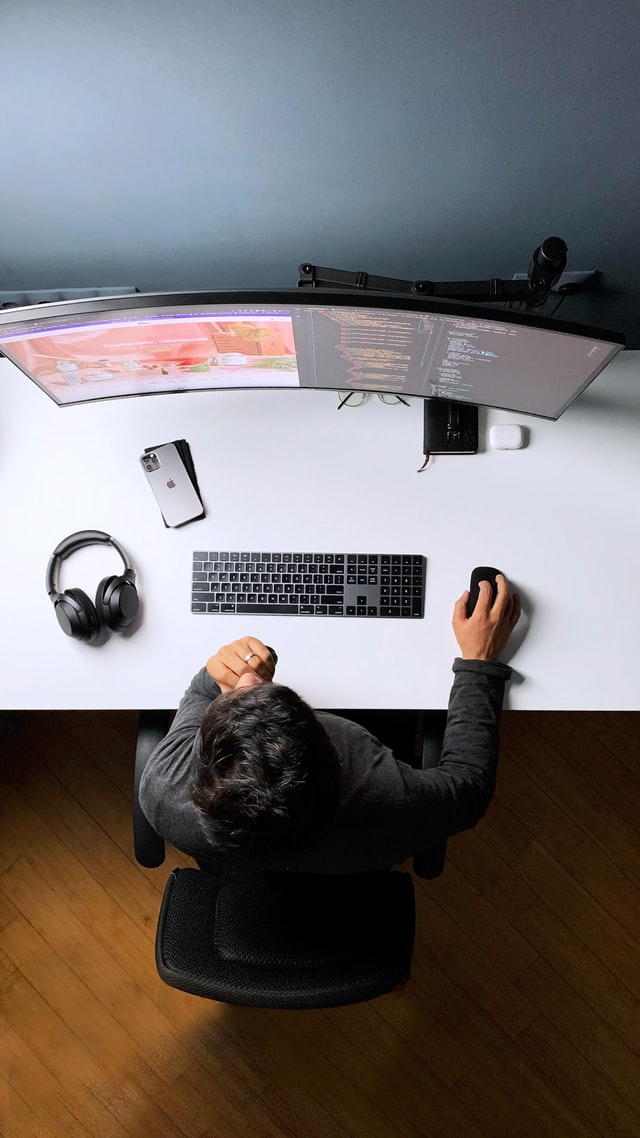7 Outdated Web Design Trends And Practices

Just like every year, different fashion and technology trends replace old trends. Likewise, web designers keep researching and experimenting constantly to find designs that make the user experience smoother and more enriching. Over the years the World Wide Web has changed a lot and most of it has been the same. Websites are ready to try more concepts while the gigantic mega images are out of trend. While different designs work differently for a variety of industries according to their unique goals and call to action, most of them use some design element.
Before we enter the new decade, let’s understand some outdated trends and practices that no longer work well and optimize accordingly.
1. Cliche Stock Images
The cheesy and all smiley photos work for some industries, but most of the time they seem forced. You can choose to have them in different sections, but it doesn’t help to populate your website’s home page or service pages with them to make them more graphical. Using fancy images isn’t bad as many clients don’t have the budget to do a personalized photo shoot. However, they shouldn’t be that obvious and at least handpicked (not from the overused free image pages).
2. Sliders with needless call-to-action
According to various surveys, sliders that slide with nonsensical call-to-action buttons distract them from the actual task they’re there for. Apart from slowing down the loading speed of the website many times, they also slow down users when trying to navigate and reach other parts of the website. Although initially built by designers to utilize space and display multiple promotional offers, they are now being used extensively to display eye-catching images that simply take away the website’s purpose.
3. AutoPlay
Videos and audios are found and used by various websites, however, their play and pause operations must be under user control. Auto-playing video, especially audios, adds a lot of noise to an already staggered position that has just been caught off guard by so much media thrown at you. Many ads and campaigns start immediately when you access the website and give the user little or no control over when they end or start. Needless to say, this has to stop.
4. Flash
Very clearly Flash is almost as old as a gramophone (joke) but that makes it on the list because so many webpages still use it. Even after Adobe and various browsers have officially announced that they will cut support for Flash, many sites continue to use it. The player was removed not for one good reason but for many reasons including security and usability concerns. However, if you still want to use it, know that your users or your website audience will only see an image displayed above the flash section stating that Adobe Flash Player is blocked or not supported.
5. Huge Images
By saying huge or large images, we mean images that take up a large part of your home page. It can be a single image or a series of images with an action button. They might apparently be very interesting from a design point of view, but users think differently. Although now customers are also demanding that the images section be kept smaller, feedback has also come from many users that these images tend to push the content further down, alienating the true purpose and usefulness of the webpage. So, keep the call to action straight up front and easily visible with normal sized images.
6. Annoying Pop-Ups
We’ve all been there, dodging multiple pop-up menus or buttons that appear out of nowhere when visiting a website. The problem is not only that they are too early or too many at the same time, but it is in the nature of the popup that the user has no choice but to read or watch the popup. On top of that, sometimes they lead to their Facebook messenger or chatbot which will bombard you with messages or ask you to follow a promotional offer that was already on the site. Sigh!
7. Same Tab Links
Several websites add links for promotional, navigation and other purposes that work well, but the problem is when these links open in the same tab, which takes the user away from your page and replaces it with another. Not only is this distracting, it actually necessitates a drop in conversion rates. Keep this in mind the next time you add a link to your site. Numerous such design elements should disappear with 2020 as they are feared and disappointing in many ways. Make room for new content, layout, and layouts that align with your website goals and keep expanding your reach through regular comments and surveys. No one can better tell you which technique or design element to employ would work better for your target demographic than your own audience.
Feel free to reach out to me if you need help with what is right for you, using this link.
Cheers!